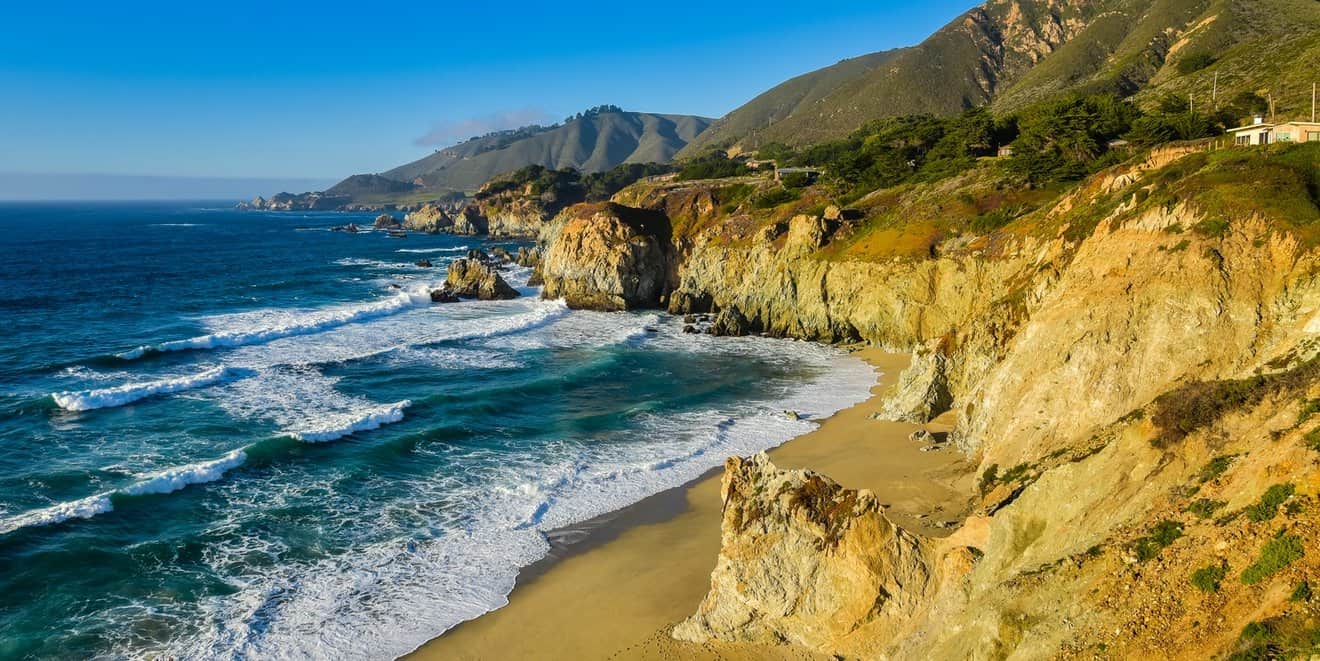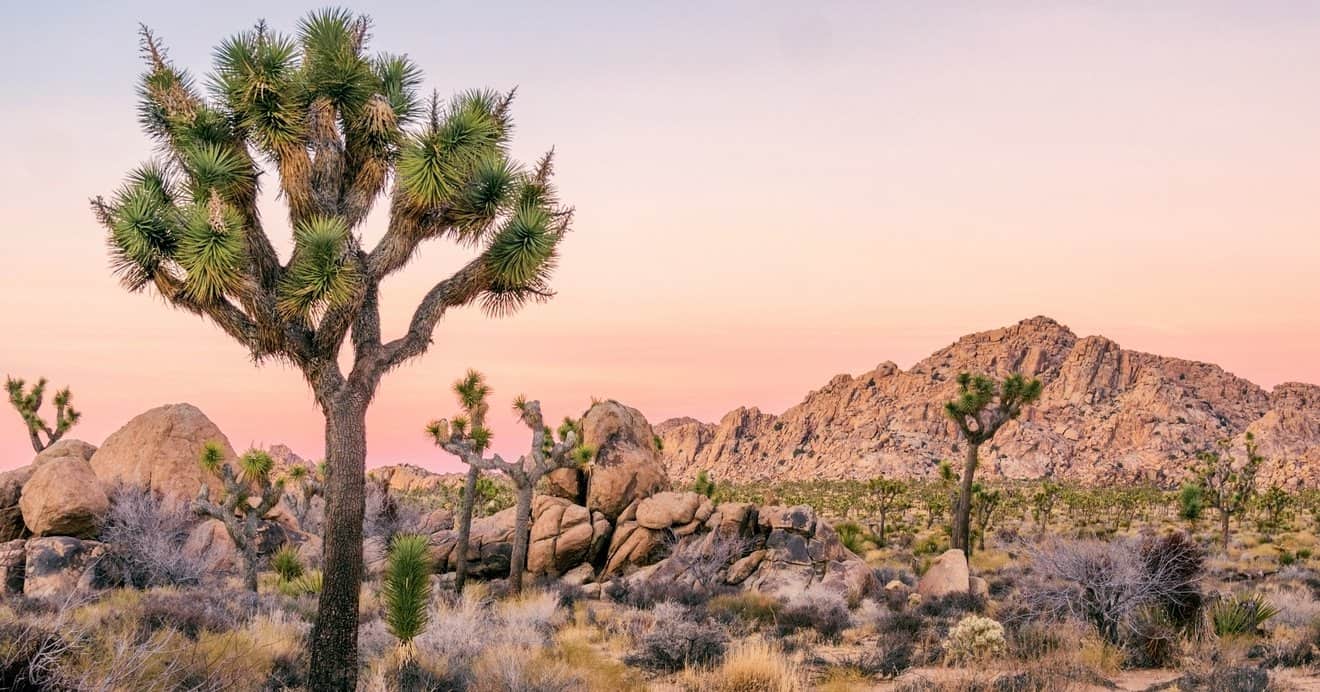California is the state that everyone dreams of visiting. By taking incredible road trips across the state, which is the best way to explore it, you can discover amazing natural parks, sunny beaches, the exciting cities on the coast, or the history of the Gold Rush… here you will find itineraries, ideas, and must-see destinations to discover the Golden State!
Contents
- California at a Glance
- California Tourism
- Main California Airports
- Tips for a California Road Trip
- Top 10 California Attractions and Places to Visit
- Visiting California: How to Plan a Road Trip Itinerary
- California Scenic Drives: the Best Highways for your Road Trip
- The Most Beautiful Cities in California to Visit
- When Is the Best Time to Go to California? Guide to California’s Climate and Temperatures
- California Road Trip Map
- California Road Trip Itineraries Divided by Region
- California National Parks Road Trip
- California’s Top National Parks: Unveiling Nature’s Wonders
- Death Valley and Yosemite
- Death Valley National Park: Travel Guide and Road Trip Tips
- Yosemite National Park Travel Guide: how to plan a trip?
- Sequoia and Kings Canyon
- Sequoia National Park: Why You Should Go and How to Plan Your Visit
- Planning a Kings Canyon Adventure: Best Things To Do and Hiking Trails
- Other Parks
- Joshua Tree National Park: Tips for Planning Your Visit
- Pinnacles National Park in California: Visit Caves and Pinnacles Made of Volcanic Rock
- Mojave National Preserve: Kelso Dunes, Joshua Trees and other must-see attraction
- Adventure in Lassen Volcanic National Park, California’s Own Little “Yellowstone”
- Redwood Parks in California: the Tallest Trees in the World
- Point Reyes National Seashore and Lighthouse: Breathtaking Views on the California Coast
- Channel Islands National Park: How to Get There?
- Anza-Borrego Desert State Park, California: Visitor’s Guide
- California Winter Travel Tips
- California General Information
California at a Glance
Here are some concise details about the state of California.
California Tourism
Tourism is a significant industry in California, attracting millions of visitors every year, and California holds the record as the American state with the highest annual visitor numbers. Factors contributing to this include the climate, the variety of landscapes ranging from oceanic beaches to some of America’s most famous natural parks, the presence of major cities, and a wide range of cultural and entertainment attractions.
There is no doubt that a trip to California can fully satisfy the needs of every type of tourist, from those seeking beach life to those who prefer high mountain forests, from those who love the hustle and bustle of big cities to those who prefer the vast expanses of the desert.
Main California Airports
There are many airports in California, but the most important ones to consider for a trip are those in the three major cities on the coast:
- Los Angeles International Airport in Los Angeles
- San Francisco International Airport in San Francisco
- San Diego International Airport in San Diego
These airports are not only used for visiting their respective cities but also as bases for extensive road trips to California’s national parks and neighboring states. Alternatively, you can also choose to land in Las Vegas (McCarran International Airport), outside the state borders, or in Phoenix (Phoenix Sky Harbor International Airport).
Getting Around California
California is a very large state, and as such, travel within it can be time-consuming regardless of the mode of transportation. Nevertheless, the road connections are excellent, which is why it’s one of the American states where renting a car and embarking on a road trip to explore its numerous attractions can be well worth it. In this regard, we have dedicated articles on how to plan a tour of California and which scenic routes to take.
Regarding public transportation, the coastal areas offer the most diverse options for getting around. Depending on the distance you need to cover, it may be convenient to use a train or a bus. Keep in mind that natural attractions are rarely accessible by public transportation, but traveling between cities by train or bus can be convenient in some cases, especially if your trip primarily involves cities and you plan to explore the countryside with organized tours.
Finally, within the cities, you won’t have any trouble using public transportation (except for Los Angeles, which, despite its transportation network, is still more suited for exploration by car). We recommend reading our articles on the cities of interest to you; in each one, we delve into transportation options. Here are some examples:
Tips for a California Road Trip
Do you want to go to California but you are not familiar with the state, its main attractions, and possible road trip routes? These 5 articles are designed as guides to help you learn more about this beautiful state! If you’re on the fence or don’t know which way to go, start here!

Top 10 California Attractions and Places to Visit
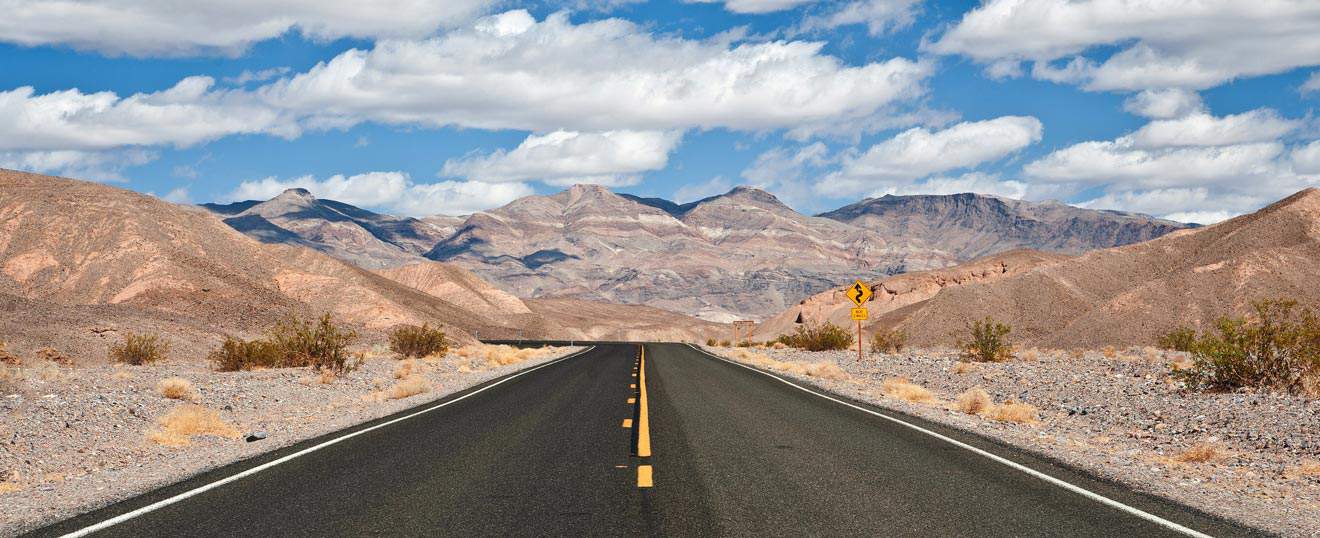
Visiting California: How to Plan a Road Trip Itinerary

California Scenic Drives: the Best Highways for your Road Trip
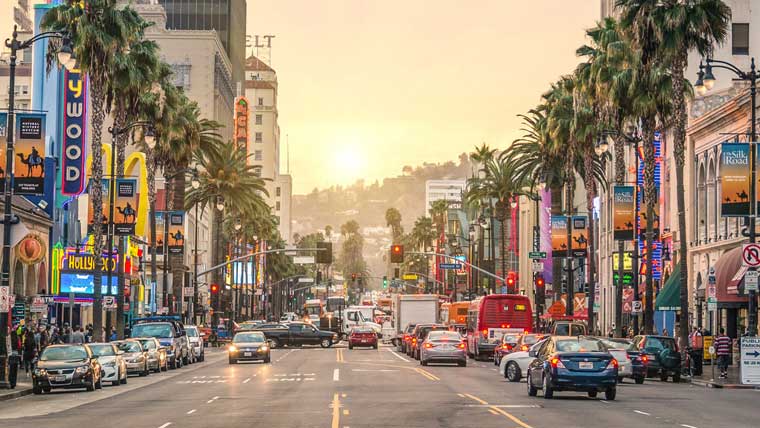
The Most Beautiful Cities in California to Visit
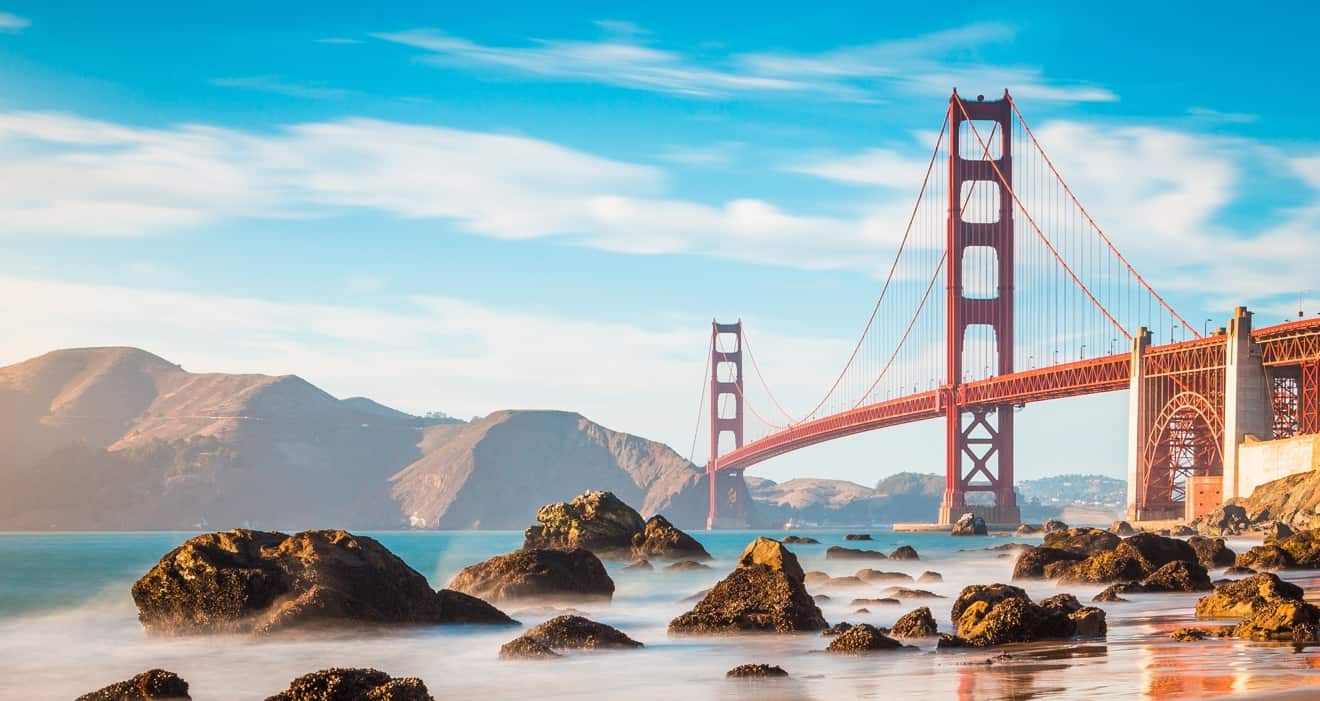
When Is the Best Time to Go to California? Guide to California’s Climate and Temperatures
California Road Trip Map
California Road Trip Itineraries Divided by Region
Browse our California road trip itineraries by region:
California National Parks Road Trip
California’s Top National Parks: Unveiling Nature’s Wonders
California is as vast as it is fascinating; it is home to very diverse natural landscapes. The numerous national parks are among the most popular destinations in California and are a must for those in search of open landscapes and a bit of adventure. Let’s take a look at the national parks in California and we will try to present …
Read moreDeath Valley and Yosemite
Sequoia and Kings Canyon
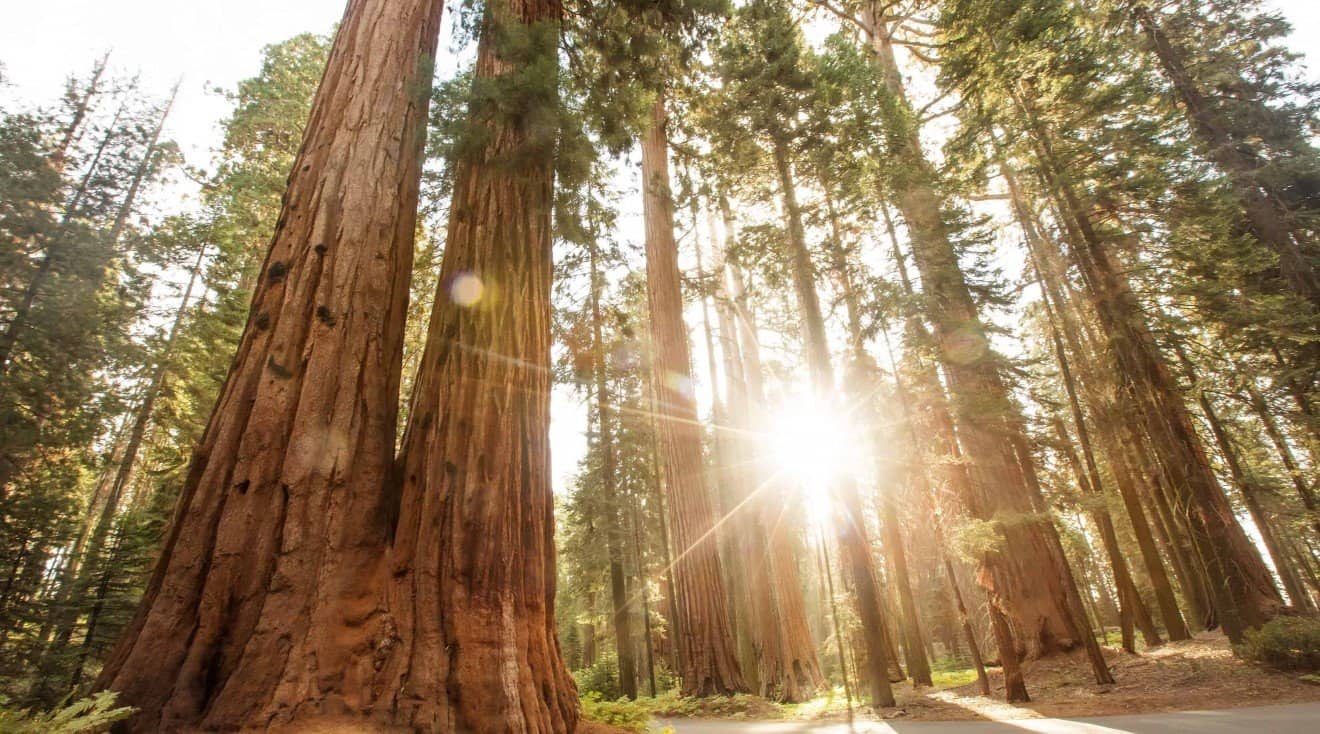
Sequoia National Park: Why You Should Go and How to Plan Your Visit
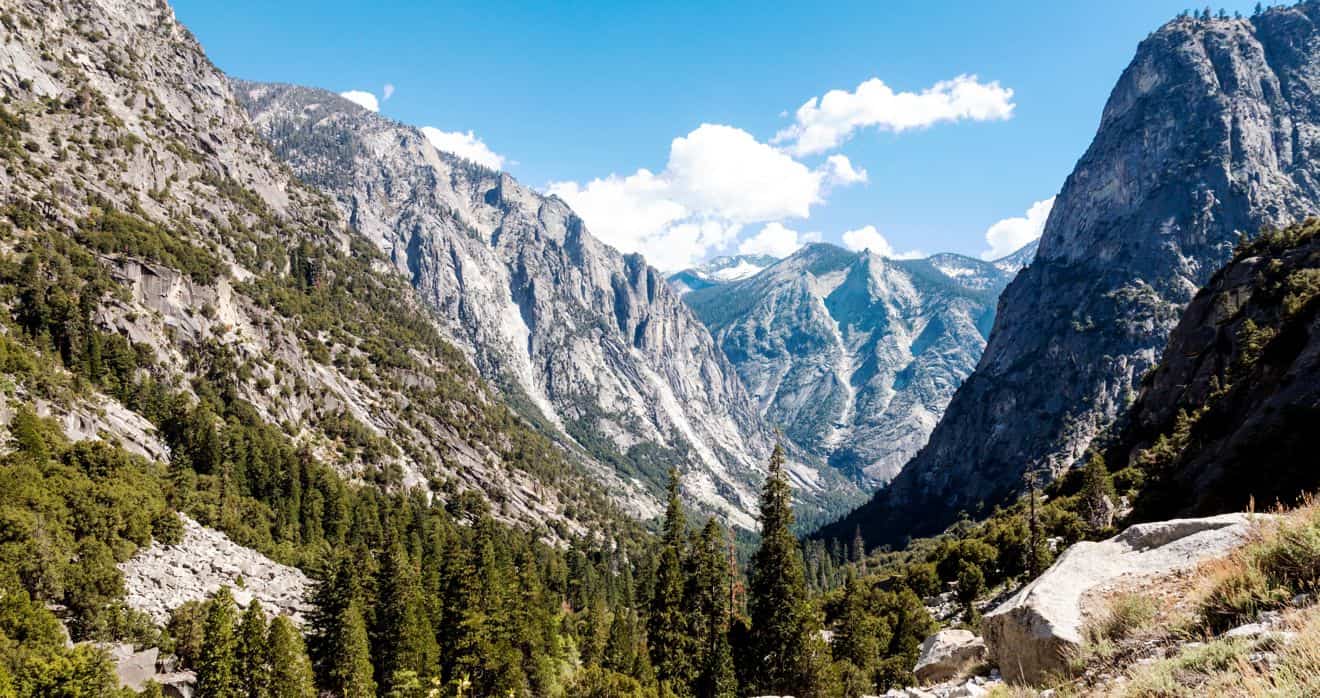
Planning a Kings Canyon Adventure: Best Things To Do and Hiking Trails
Other Parks
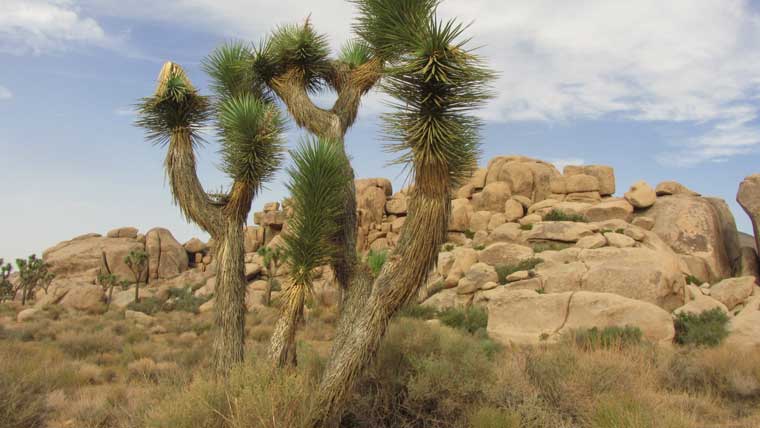
Joshua Tree National Park: Tips for Planning Your Visit
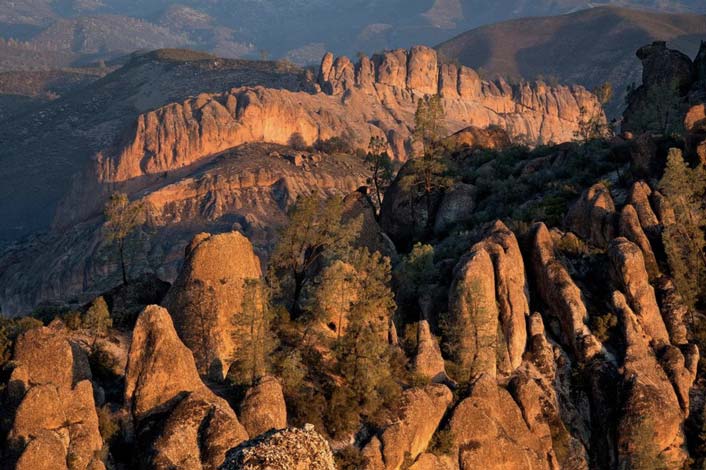
Pinnacles National Park in California: Visit Caves and Pinnacles Made of Volcanic Rock
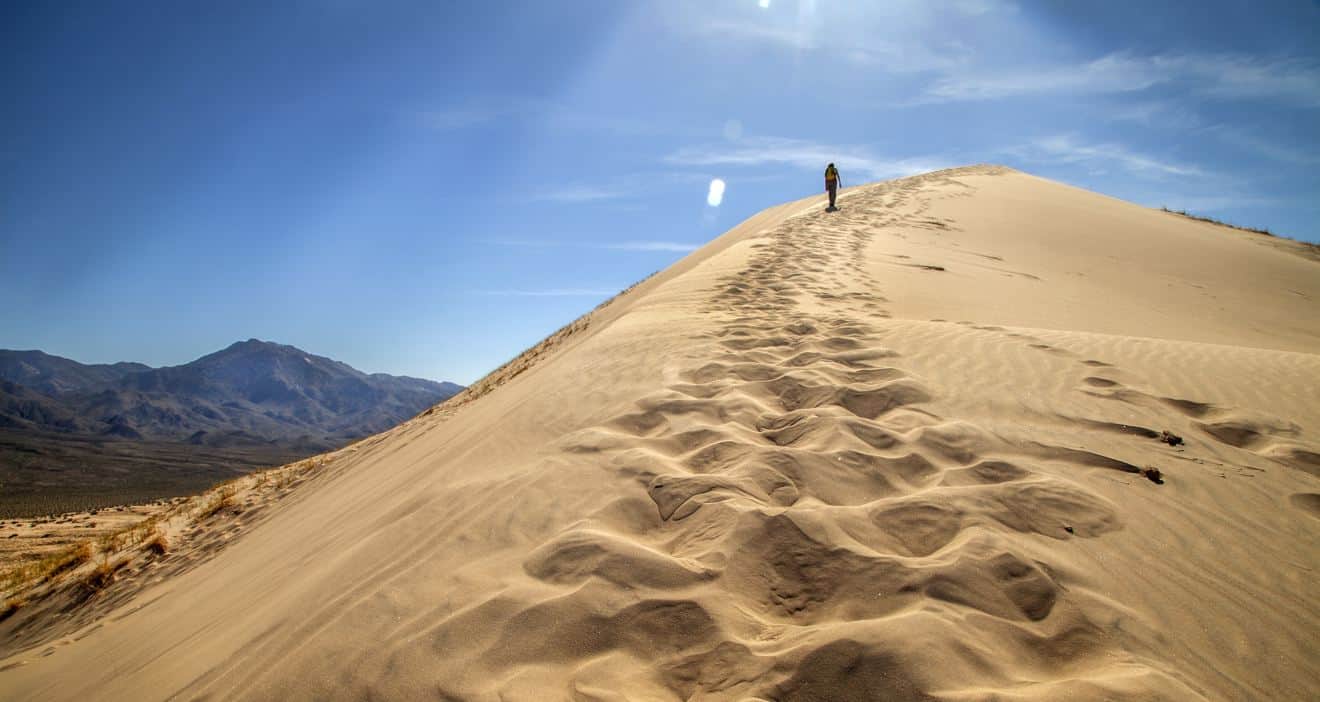
Mojave National Preserve: Kelso Dunes, Joshua Trees and other must-see attraction
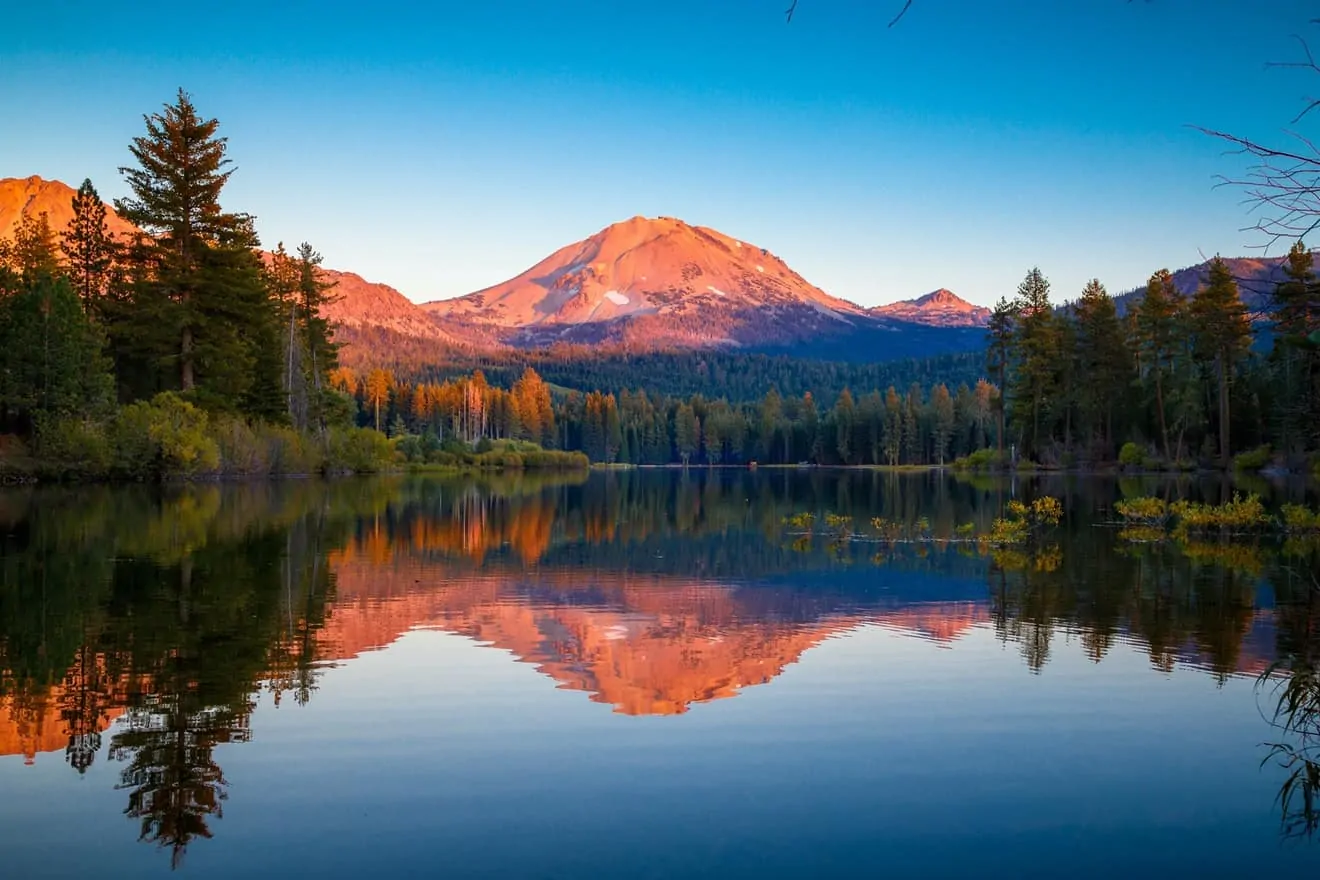
Adventure in Lassen Volcanic National Park, California’s Own Little “Yellowstone”

Redwood Parks in California: the Tallest Trees in the World
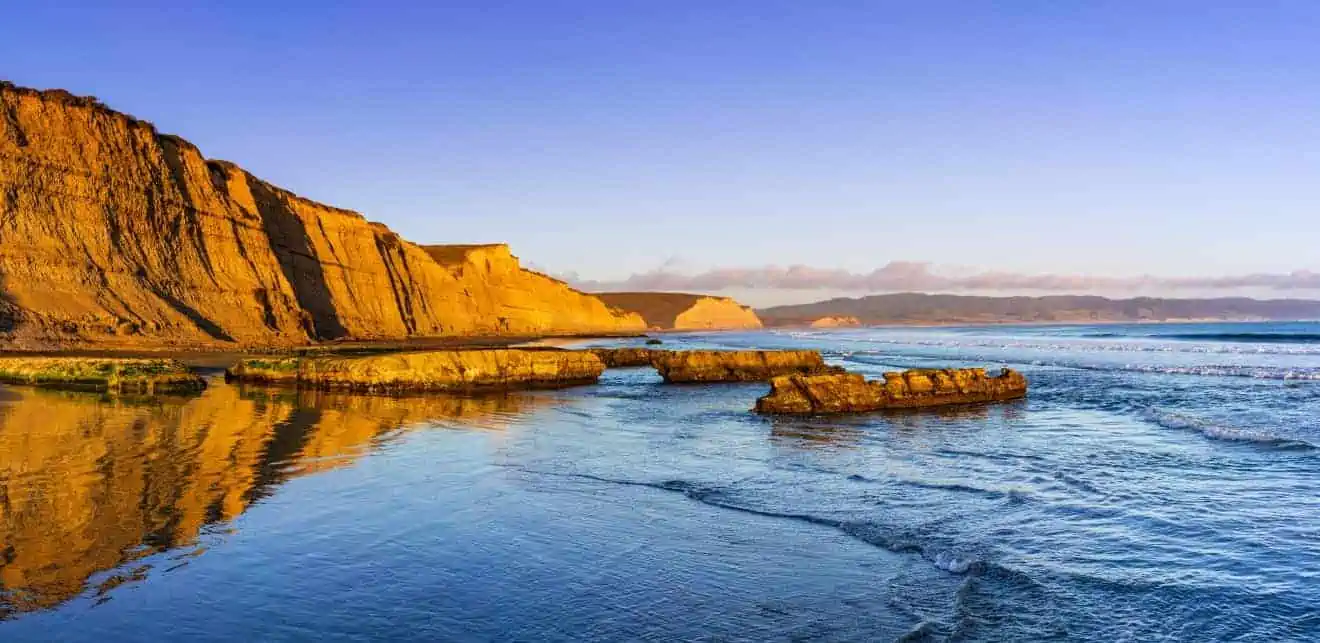
Point Reyes National Seashore and Lighthouse: Breathtaking Views on the California Coast

Channel Islands National Park: How to Get There?
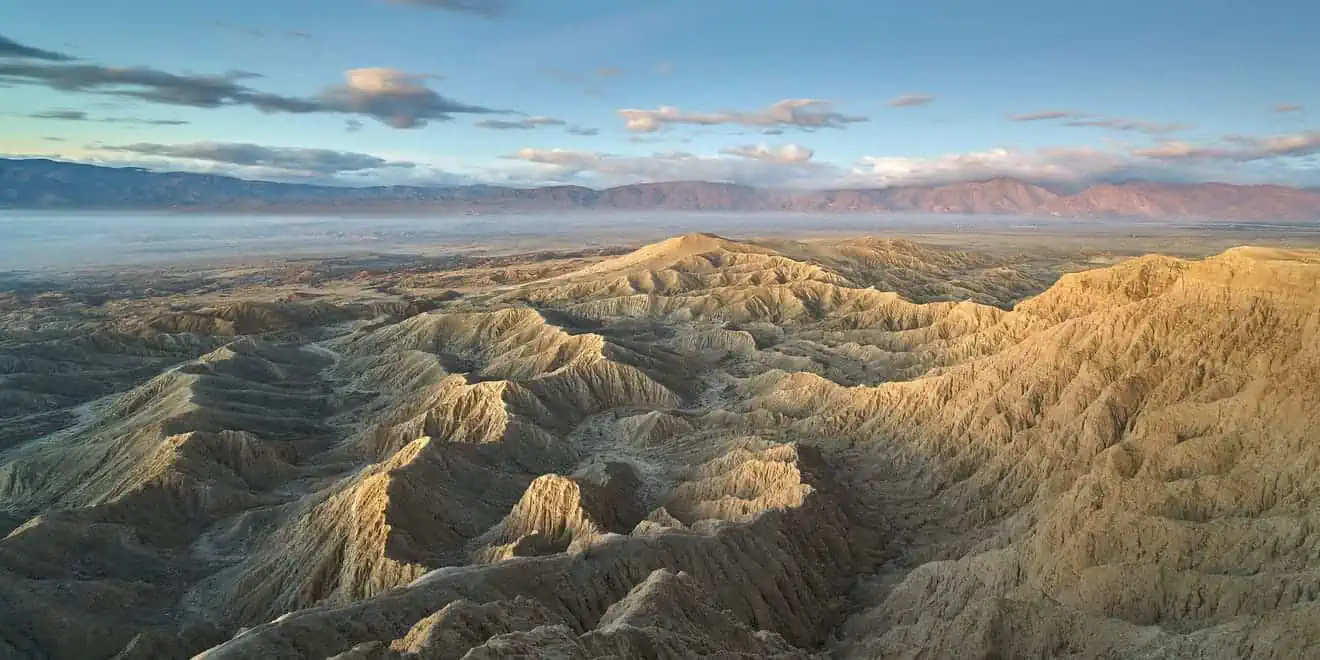
Anza-Borrego Desert State Park, California: Visitor’s Guide
California Winter Travel Tips
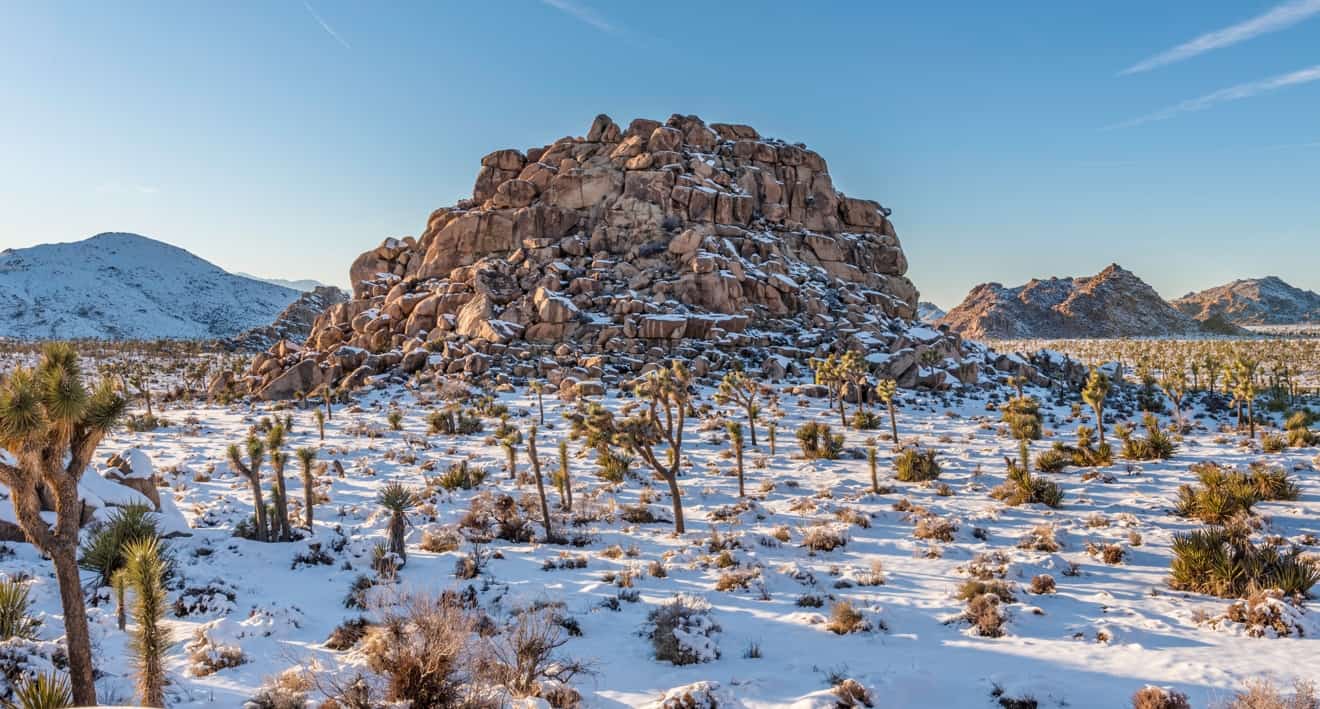
Visit California in the Winter: An Itinerary without the Stress of Unpredictable Weather Conditions!

Christmas in California: The Best Places to Spend the Holidays
California General Information
Etymology, Motto, Nickname
The origin of the name California is not certain, but it is believed to be derived from the 16th-century chivalric novel Las Sergas de Esplandián, written by Garci Rodríguez de Montalvo, which was popular during the Spanish exploration of Mexico. In the book, there was mention of an imaginary island called California: a land rich in gold, pearls, and strange animals. The island was ruled by Queen Calafia, and the name of the queen (and the island) may have been derived from the Arabic term for rulers: Caliph.
Since 1963, California’s motto has been Eureka! which is a Greek word that means “I have found it!” It is also famous for being uttered by Archimedes when he understood the principle of hydrostatic buoyancy, which is now named after him. It is said that Archimedes also exclaimed this phrase when he discovered a way to determine the purity of gold. This is why it was chosen as the motto: gold is the symbolic mineral of the state and has greatly influenced its history (see our article on the California Gold Rush). This is also the same reason why California is known as “The Golden State“.
Geography
California stretches along the southwestern coast of the United States, facing the Pacific Ocean. It borders l’Oregon to the north, also along the Pacific, and to the east with Nevada and Arizona. To the south, it shares its border with Mexico, specifically with the Mexican state of Baja California.
Extension and Regions
With its 163,695 square miles, California is the third-largest state in the federation, following Alaska and Texas. It stretches from north to south along the coast and is culturally divided into two major regions: Northern California, which includes the 48 northern counties, and Southern California, which includes the 10 southern counties. The latter region is culturally closer to Mexico and is where the majority of the Spanish-speaking population resides.
We can further divide California into 10 regions, each with its own characteristics. Along the coast, from north to south, we have the North Coast, which extends from the Oregon border to just before San Francisco, the San Francisco Bay Area surrounding the Golden Gate City and San José, the Central Coast, which runs south from Santa Cruz, and Southern California, where you’ll find Los Angeles and San Diego.
To the north, between the North Coast and Nevada, lies the vast Shasta Cascades region, beneath which you’ll find the Sacramento Valley and the Gold Country. In the central part of the state, between the Central Coast and Nevada, you’ll find the San Joaquin Valley and the Sierra Nevada. The entire southeastern area is the California Desert region.
This division is due to the great diversity of California’s landscape, which, compared to other American states, boasts a wide range of climates and types of terrain. For this reason, it is considered one of the states richest in diverse attractions to see, both from a natural and cultural perspective.
Geographic Features
From a geographical perspective, California features a highly diverse landscape. In the center of the state lies the California Central Valley, a vast plain that stretches from north to south and serves as the heart of California’s agricultural production. This extensive plain is surrounded by mountains: the Sierra Nevada to the east, the Cascade Range to the north, the Tehachapi Mountains to the south, and the coastal mountain ranges to the west.
The significant number and diversity of mountain ranges, along with the fact that approximately 45% of the state is covered by forests, explain why California is home to many natural parks where you can admire, among other things, the famous giant sequoias. It’s worth noting that Alaska is the only American state with more forests than California, and California’s mountains house some of the world’s oldest trees.
The southeastern part of the state is occupied by a portion of the vast desert that extends into neighboring states, particularly Nevada and Arizona. Here, the landscape, as well as the climate, differs significantly from the lush northwest and coastal areas. Nonetheless, even in this region, you can find places of great tourist interest, with Death Valley being a prominent example.
Mountains, Lakes and Rivers
Among the aforementioned mountain ranges, the most prominent is undoubtedly the Sierra Nevada, where you can find Mount Whitney, the highest peak in the contiguous 48 states (the highest peak in the entire USA is Mount Denali in Alaska). Within the Sierra Nevada, the Yosemite National Park and the Sequoia National Park stand out as natural wonders.
California boasts some significant lakes as well. First and foremost is Lake Tahoe, situated in the Sierra Nevada mountains, straddling the border between California and Nevada. It ranks as the largest alpine lake in North America. The largest lake entirely within California is Clear Lake, located in the western part of the state. Unfortunately, Lake Tulare, which dates back to the Pleistocene era and was once the largest lake west of the Mississippi River, dried up in the 20th century due to the diversion of its tributaries for agricultural purposes. California is also home to a large saline lake, the Salton Sea, situated along the San Andreas Fault.
The two most important rivers in the state are the Sacramento River and the San Joaquin River, which, along with their tributaries, create the fertile Central Valley of California. The San Joaquin itself is a tributary of the Sacramento River, which flows into the ocean not far from San Francisco.
Capital and Major Cities
The state capital is Sacramento, which is the sixth-largest city in terms of population, with approximately 530,000 residents. The largest metropolitan area is Los Angeles, which has nearly 3.9 million residents. The only other cities in California with populations exceeding one million are San Diego, with 1,387,000 residents, and San José, with around 1,014,000 residents. Additionally, there is San Francisco with 874,000 residents and Fresno with approximately 542,000 residents.
Due to the state’s topography, which includes numerous mountainous areas and a desert in the southeast, most inhabited areas are concentrated in two regions: along the coastline and in the vast Central Valley, which is the most fertile and suitable for settlements. Besides the well-known metropolises, the central-southern coastal region is dotted with numerous cities of varying sizes, stretching along the entire line from San Francisco to San Diego via Los Angeles.
Climate
The climate of California is generally considered Mediterranean, similar to what you have in Italy. However, due to the variety of environments within the state, California exhibits a similarly diverse range of climate conditions. The classic Mediterranean climate is predominantly found in the Central Valley and along the coast, although the ocean tempers temperatures in coastal areas, making them even milder. The northern part of the state is much rainier than the southern part, and as a result, it is much greener.
Of course, mountainous areas have a different climate and experience very cold temperatures in the winter. Conversely, the desert area of Death Valley is famous for being one of the hottest places on Earth, with record highs exceeding 122°F, To learn more, you can read our guide on the climate of California.
Wildlife
Thanks to its vast and varied terrain, with different altitudes and climates, California boasts a rich ecosystem and many species that are endemic to this region. In the desert, you can find unique animals such as the kangaroo rat, the roadrunner, and the cactus wren. In the mountainous areas, large mammals like bears and mule deer, bighorn sheep, and coyotes are abundant, as well as mountain lions and bobcats. Among amphibians, the local sequoia salamander stands out.
Each climate zone serves as habitat for different animals, making California one of the most biodiverse states in the United States. While it’s not uncommon to spot whales near the coast, even the scorching desert is home to unique species.
History
Summarizing the history of California in a few lines is challenging because this geographic area has one of the richest histories in American history books. Even in the pre-Columbian period, the territory of present-day California was one of the most culturally and linguistically diverse regions. More than 70 distinct Native American ethnic groups have been identified, with an estimated total population of nearly 300,000.
The first Europeans to explore these lands were the Spanish, led by the Portuguese explorer Juan Rodríguez Cabrillo in 1542, commemorated by a National Monument in San Diego. The English pirate Francis Drake also explored a portion of the California coast almost forty years later, but it was the Spanish explorer Sebastián Vizcaíno who mapped the California coast in 1602. Over the next two centuries, Spanish colonization developed, including the construction of forts, small towns, and missions (see our guide to the California Missions). In the early 1800s, the Russians also settled in California, establishing a trading post at Fort Ross and a series of settlements along the northern coast.
In 1821, the Mexican War of Independence granted ownership of California to the Mexican Empire, later the Mexican Republic. However, the northern part, which is now part of the United States, remained sparsely populated, and gradually settlers from the United States and future Canada arrived. In 1846, a group of American settlers rebelled against Mexican rule and proclaimed the California Republic in Sonoma. However, in the same year, the Mexican-American War broke out, and the northern part of California was militarily occupied by the United States, leading to its annexation into the Union on January 13, 1847.
Economy
California boasts the most productive economy of all the United States. However, it’s not just the state with the highest GDP in the nation; it has the largest subnational economy in the world. If it were a sovereign nation, California would rank fifth among the world’s economies today. This is due in part to the fact that California is the most populous state in the USA and home to key sectors of high economic significance. Some prominent examples include Silicon Valley, which hosts several technology giants, and Hollywood, which leads the global film industry.
In addition to these well-known cases, other sectors contribute to California’s thriving economic situation. Among them, agriculture plays a crucial role. When one thinks of agriculture in the USA, it’s common to associate it with other states more often linked to vast farming operations. In reality, California has the highest agricultural production of any American state. Its Central Valley is one of the most productive agricultural regions globally, and half of all US fruits and vegetables are grown here. In fact, unlike other American states dominated by monoculture, California’s climate allows for a much more diverse production of vegetables and fruit trees.
Sport
California is the American state with the most franchises in major professional sports leagues. Just the San Francisco Bay Area alone has six teams in the Major Leagues, while the Los Angeles area has ten. Other two major league teams are located in Sacramento and San Diego.
In terms of American football, the three NFL teams are the Los Angeles Rams, Los Angeles Chargers, and the San Francisco 49ers. It’s worth noting that the Super Bowl has been hosted in California 12 times in four different stadiums.
If you’re a basketball fan, a trip to California offers the opportunity to see an NBA game in Los Angeles or in San Francisco. There are four teams in the National Basketball Association (Golden State Warriors, Los Angeles Clippers, Los Angeles Lakers, Sacramento Kings), and one women’s team in the Women’s NBA: the Los Angeles Sparks.
Of course, like in the rest of America, baseball is a big deal, with five teams in Major League Baseball: Los Angeles Dodgers, Los Angeles Angels, Oakland Athletics, San Diego Padres, and San Francisco Giants.
California also boasts three National Hockey League teams (Anaheim Ducks, Los Angeles Kings, San Jose Sharks), two rugby teams (LA Giltinis and San Diego Legion), and three soccer teams: Los Angeles Galaxy, San Jose Earthquakes, and Los Angeles Football Club.
Lastly, it’s worth noting that California is the only U.S. state to have hosted both the Summer Olympics (in Los Angeles in 1932 and 1984) and the Winter Olympics (in Squaw Valley in 1960).
